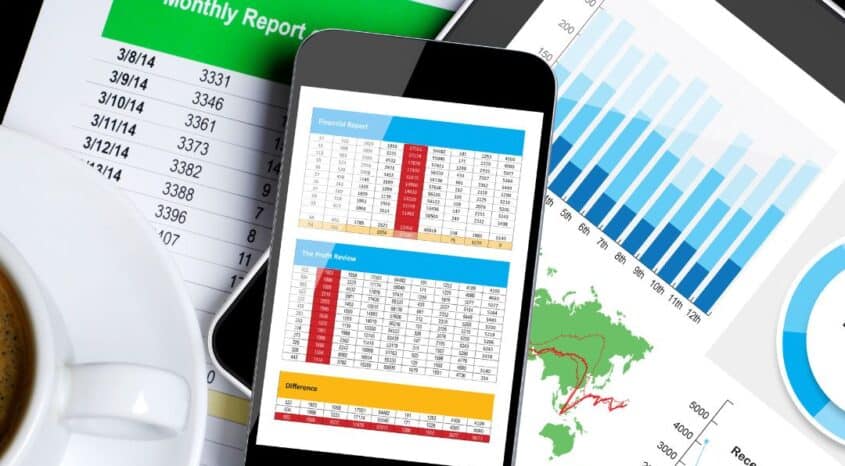The winds of change are ripping through the retail sector. In a turbulent economy, consumer demand remains unpredictable, while the expectation for personalised service continues to surge.
Stubborn inflation rates, supply chain pressures and increasing costs are eating heavily into retailers’ margins, adding strain to the already slim high-growth and low-profit models many operate under – and making cash flow a major concern.
Ongoing disruption from AI and supply chain pressures are adding to the sense of chaos.
Meanwhile, millions of businesses have become completely bogged down in day-to-day operational tasks. The average retailer is spending more than 290 hours a year on tedious admin alone, according to research by Brightpearl by Sage.
But there’s hope. Retail leaders are switching on to the ultimate panacea for operational complexity: end-to-end retail automation.
End-to-end automation means implementing tech solutions that cover every aspect of your operations. On the front end, this includes automating customer comms, sales processes and even your marketing. On the back end, it extends to supply chain management, inventory planning, finance-related tasks and data analysis.
Reshaping retail
Automation has the potential to reshape retail forever, creating simplified, streamlined companies with motivated employees empowered by technology.
As many businesses scramble for ways to survive the current storm, experts agree that the ones that succeed will be those that recognise the pivotal opportunity automation presents – and urgently embrace it.
“The rise of automation through AI will have a more significant impact on retail than other industries,” explains Sutherland Director of Retail Christopher Schyma.
“This is the result of the changing retail industry – today’s customer requires digital-first experiences, where needs are met and expectations exceeded across a variety of touch points and at the complete convenience of the shopper.”
For e-commerce brands, one of the major attractions of automation is the significant time savings it offers.
Research by the McKinsey Global Institute has shown automation can enable a typical retail store to run with up to 65 percent fewer hours.
In fact, McKinsey’s research has shown that about half of the activities in retail can be automated using current, at-scale technology.
Retail businesses using Automation can typically save around 296 hours each year, according to Brightpearl research.
It’s a benefit that £30M athleisure brand AYBL has experienced first hand.
The brand’s founder and CEO Reiss Edgerton explains: “Automation technologies like Brightpearl and Inventory Planner take care of so much, including automatic replenishment, that I can be quite hands-off with merchandising and purchasing.
“It easily saves us 100 hours a month. That’s key for me – I don’t want to be getting bogged down by managing day-to-day stuff; I want to be free to focus on the bigger picture.”
Reiss taps into a crucial consideration for retailers: the pressing need to reduce the burden on business leaders, and their teams, of managing operations manually.
Tangled up in tasks
Whether it’s organizing spreadsheets, clearing out emails, updating databases, processing invoices, customer support or another dreaded admin task, the to-do list of time-consuming tasks is endless, and, for many, the burnout is real.
“Retail businesses across the UK are being suffocated by manual admin work, which is draining productivity, overwhelming staff and stunting growth,” says Mark Hook, Product Marketing Director at Brightpearl.
“Our report, revealed the shocking extent of this issue, with retailers spending an average of 5 hours and 42 minutes every week fighting admin. That’s nearly 300 hours a year spent on mundane tasks like order processing, invoicing and inventory management.
“No wonder a staggering 75% of retail employees feel overwhelmed by the amount of admin they have to handle, with many working weekends to keep up. It’s simply not sustainable.”
Unfortunately, this situation is only getting worse for many businesses – especially fast-growing merchants who typically find that their manual to-do list suddenly goes from ‘manageable’ to ‘overwhelming’ when they hit a level of growth that inevitably causes their operations to become more complex.
When your team is tired, mistakes get made, customers get disappointed and your reputation – and even your profits – take a hit.
Overwhelmed leaders and their exhausted teams are also less able to face the challenges of the current retail market – and more likely to succumb to its increasing pressures.
However, by embracing automation, retailers can beat burnout and breathe new life into their businesses, and their prospects.
Employees who are no longer held back by admin responsibilities are more productive and can redirect their energy toward more meaningful work. This shift not only enhances job satisfaction and well-being but is ultimately linked to boosting your bottom line.
Where automation leads, efficiency follows – which in turn supports profitability, as Liz Armbruester, EVP of Customer & Compliance Operations at Avalara identifies.
She says: “Over the past couple years we’ve seen business leaders forgo the growth-at-all costs mindset for one that emphasizes profitability and efficiency.
“This new mindset has led to greater scrutiny on how money is being spent and it has accelerated the adoption of automation software. There’s a good reason for this change because automation can help virtually every arm of a business become more efficient.”
The secret to scaling
The scope of automation to transform every operational aspect of a retail business isn’t hyperbole. In fact, in an ultra-competitive market, it can be the secret to scaling because it enables retailers to focus on meeting consumers where they are and delivering the service they crave, without drowning in operational complexity.
Mark Hook adds: “The best way to reduce both complexity and cost in this economic climate is simply to automate as much of your operation as possible.
“Automation eliminates the need for human intervention on high-volume, repetitive tasks, reducing labor costs, minimizing errors, and increasing the speed of your operation.”
Understandably, the prospect of wide scale automation triggers concern and resistance from some employees.
But it’s more likely, in future, that automation will lead to the creation of new roles. In the meantime, it’s about the evolution of existing roles and freeing up staff from across the businesses to focus on more strategic (and more rewarding) tasks that support growth and profitability.
Understanding the real-world, practical benefits of automation – how it saves time, enhances productivity and ultimately boosts profits – can be a powerful way to overcome resistance to automation technology.
Gaining the automation advantage
‘Emotional bracelet’ brand Bond Touch automated its operations with Brightpearl after running into issues with manual workflows following a period of rapid growth.
Automation has saved the multi-channel merchant 480 hours a month and liberated the team from dull, monotonous duties.
Jorge Henriques, COO at Bond Touch, says: “Our aim was to stop our team doing almost all manual tasks, and we were able to achieve that very quickly.
“Brightpearl is a very intuitive, hands off solution – we now only need one, or possibly two, people to manage hundreds of thousands of orders. We can easily create custom automation rules to meet our needs – for instance, if one warehouse runs out of stock, a rule kicks in to automatically route orders to a second warehouse option.”
As retail experts, as well as successful brands like AYBL and Bond Touch, have shown, automation offers a lifeline to retailers during particularly trying times.
By streamlining operations, reducing manual workload and increasing efficiency, automation can help retailers survive and thrive. Embracing this technology is crucial for meeting modern consumer expectations and staying competitive.
While it’s easy to get engulfed by the day-to-day fires sparked by running a modern retail business, it’s time to realise that, just over the horizon, there’s a retail utopia.
It’s a place where tedious tasks like data entry, inventory management and invoice processing are handled seamlessly by cutting-edge tech tools, freeing your team to focus on what they do best: driving innovation, enhancing customer experiences and growing your business.
It’s a place where you can grow your business fearlessly and look forward to a prosperous and innovative future.
But the only way to get there is by boarding the train to automation transformation – sooner rather than later.
Looking for real-world automation inspiration? Discover exactly how top retailers are transforming their operations with automation in this on-demand webinar.




